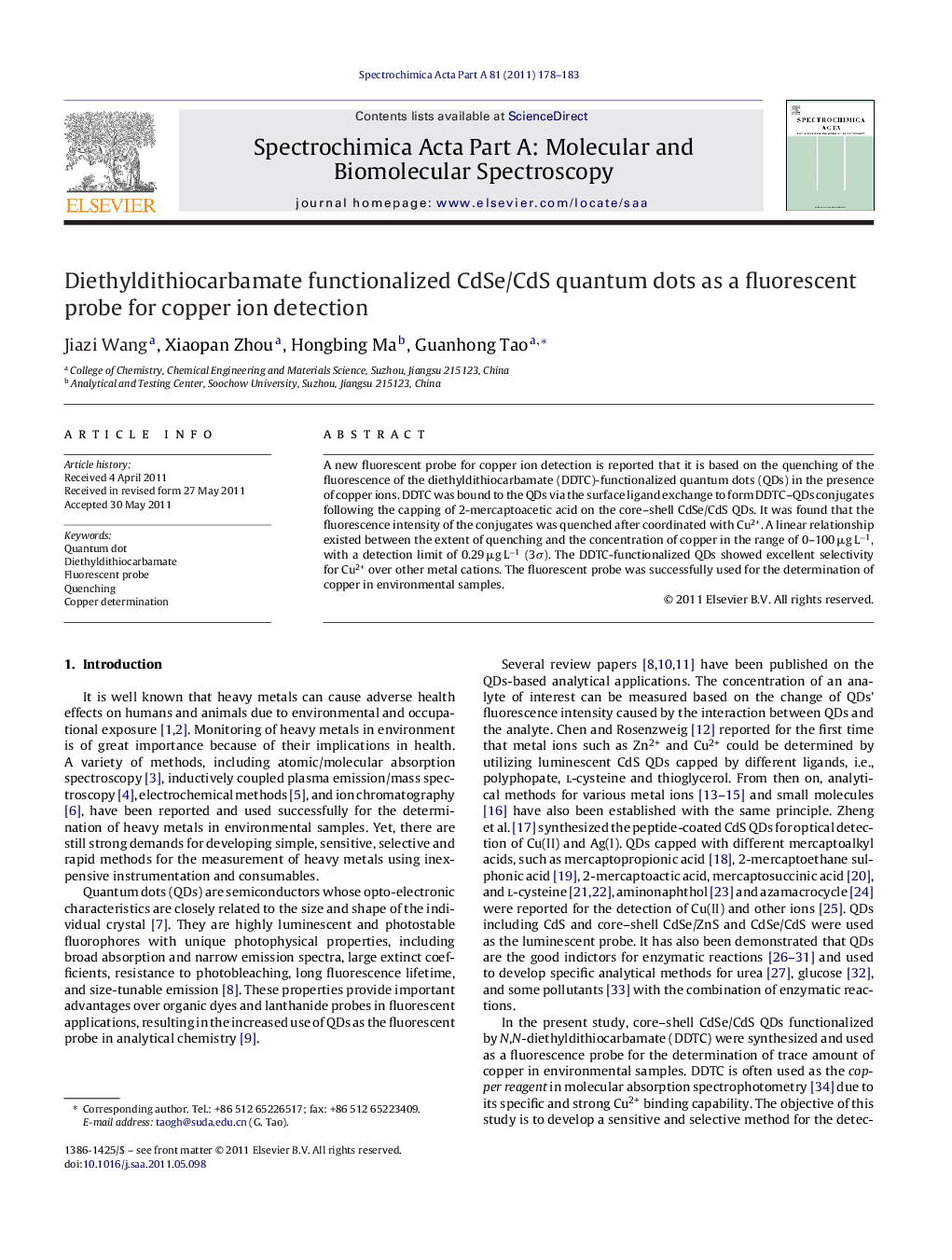| Article ID | Journal | Published Year | Pages | File Type |
|---|---|---|---|---|
| 1233543 | Spectrochimica Acta Part A: Molecular and Biomolecular Spectroscopy | 2011 | 6 Pages |
A new fluorescent probe for copper ion detection is reported that it is based on the quenching of the fluorescence of the diethyldithiocarbamate (DDTC)-functionalized quantum dots (QDs) in the presence of copper ions. DDTC was bound to the QDs via the surface ligand exchange to form DDTC–QDs conjugates following the capping of 2-mercaptoacetic acid on the core–shell CdSe/CdS QDs. It was found that the fluorescence intensity of the conjugates was quenched after coordinated with Cu2+. A linear relationship existed between the extent of quenching and the concentration of copper in the range of 0–100 μg L−1, with a detection limit of 0.29 μg L−1 (3σ). The DDTC-functionalized QDs showed excellent selectivity for Cu2+ over other metal cations. The fluorescent probe was successfully used for the determination of copper in environmental samples.
Graphical abstractDiethyldithiocarbamate (DDTC)-functionalized CdSe/CdS quantum dots (QDs) were prepared (steps A and B). Their fluorescence intensity was quenched linearly upon the addition of Cu2+ at different concentrations (step C). A method for determination of copper in environmental samples was thus established and it was sensitive and selective thanks to the specific and strong affinity of Cu2+–DDTC and unique properties of QDs.Figure optionsDownload full-size imageDownload as PowerPoint slideHighlights► Diethyldithiocarbamate-functionalized quantum dots were prepared for Cu detection. ► Excellent selectivity was achieved thanks to the specific Cu2+ binding of DDTC. ► A detection limit of 0.29 μg L−1 was obtained due to the unique properties of QDs. ► Mechanism of detection was discussed.
